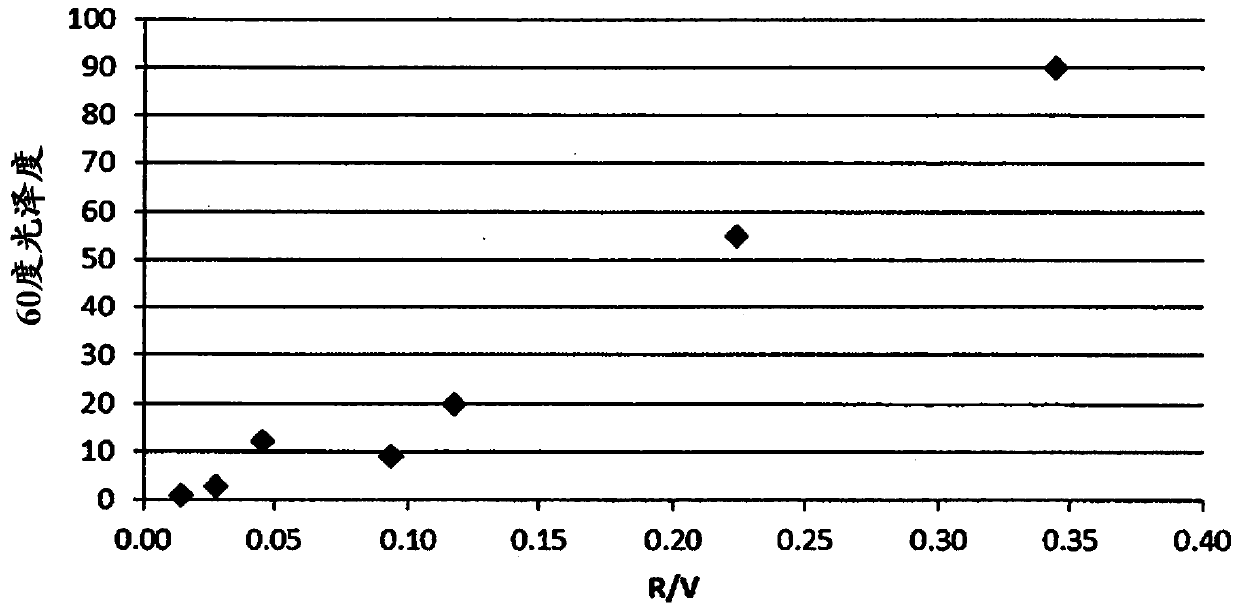Method for manufacturing antiglare film
A manufacturing method and anti-glare film technology, applied to flat products, devices for coating liquid on the surface, applications, etc., can solve the problems of inability to continuously manufacture and low productivity, and achieve an excellent balance between anti-glare properties and contrast Effect
- Summary
- Abstract
- Description
- Claims
- Application Information
AI Technical Summary
Problems solved by technology
Method used
Image
Examples
Embodiment
[0040] Hereinafter, the present invention will be described in more detail based on examples, but the present invention is not limited by these examples. Raw materials used in Examples and Comparative Examples are as follows, and the obtained antiglare films were evaluated by the following methods.
[0041] [raw material]
[0042] Acrylic polymer having a polymerizable group: "Cyclomer P" manufactured by Daicel-Allnex Co., Ltd.
[0043] Cellulose acetate propionate: "CAP-482-20" manufactured by Eastman Co., Ltd., degree of acetylation = 2.5%, degree of propionylation = 46%, number average molecular weight in terms of polystyrene: 75,000
[0044] Acrylic ultraviolet (UV) curable compound containing nano-silica: "UVHC7800G" manufactured by MomentivePerformance Materials Japan
[0045] Silicone acrylate: "EB1360" manufactured by Daicel-Allnex Co., Ltd.
[0046] Urethane acrylate: "UA-53H" manufactured by Shin-Nakamura Chemical Co., Ltd.
[0047] Dipentaerythritol hexaacrylate...
manufacture example 1
[0063] 12.5 parts by weight of an acrylic polymer having a polymerizable group, 4 parts by weight of cellulose acetate propionate, 150 parts by weight of an acrylic UV-curable compound containing nano-silica, 1 part by weight of silicone acrylate, 1 part by weight 1 part by weight of photoinitiator A and 1 part by weight of photoinitiator B were dissolved in a mixed solvent of 81 parts by weight of methyl ethyl ketone, 24 parts by weight of 1-butanol and 13 parts by weight of 1-methoxy-2-propanol. After casting this solution on a PET film using a wire rod #20, it was left in an oven at 80° C. for 1 minute to evaporate the solvent to form a coating layer with a thickness of about 9 μm. Then, the coating layer was irradiated with ultraviolet rays from a high-pressure mercury lamp for about 5 seconds to perform UV curing treatment to obtain an antiglare film A (hard coat film).
manufacture example 2
[0065] 15.0 parts by weight of an acrylic polymer having a polymerizable group, 3 parts by weight of cellulose acetate propionate, 150 parts by weight of an acrylic UV-curable compound containing nano-silica, 1 part by weight of silicone acrylate, 1 part by weight 1 part by weight of photoinitiator A and 1 part by weight of photoinitiator B were dissolved in a mixed solvent of 101 parts by weight of methyl ethyl ketone and 24 parts by weight of 1-butanol. After casting this solution on a PET film using a wire rod #20, it was left in an oven at 80° C. for 1 minute to evaporate the solvent to form a coating layer with a thickness of about 9 μm. Then, the coating layer was irradiated with ultraviolet rays from a high-pressure mercury lamp for about 5 seconds to perform a UV curing treatment, whereby an antiglare film B was obtained.
PUM
| Property | Measurement | Unit |
|---|---|---|
| thickness | aaaaa | aaaaa |
| thickness | aaaaa | aaaaa |
| thickness | aaaaa | aaaaa |
Abstract
Description
Claims
Application Information
 Login to View More
Login to View More - R&D
- Intellectual Property
- Life Sciences
- Materials
- Tech Scout
- Unparalleled Data Quality
- Higher Quality Content
- 60% Fewer Hallucinations
Browse by: Latest US Patents, China's latest patents, Technical Efficacy Thesaurus, Application Domain, Technology Topic, Popular Technical Reports.
© 2025 PatSnap. All rights reserved.Legal|Privacy policy|Modern Slavery Act Transparency Statement|Sitemap|About US| Contact US: help@patsnap.com

